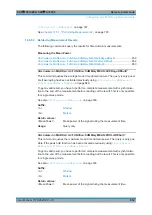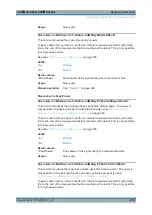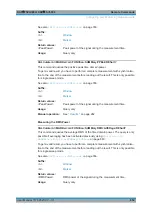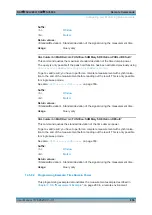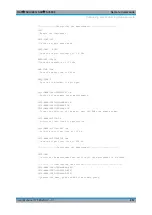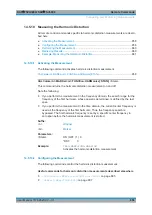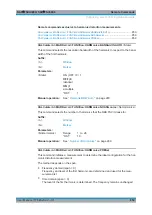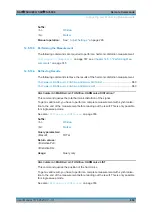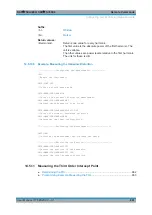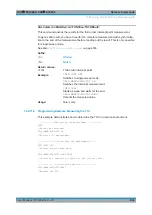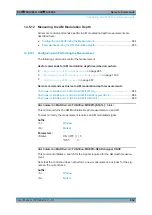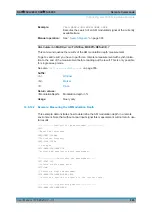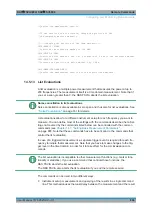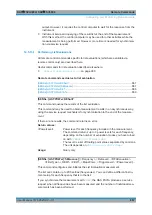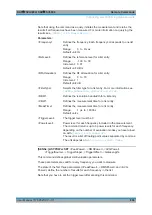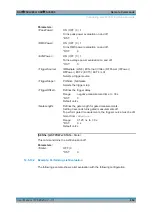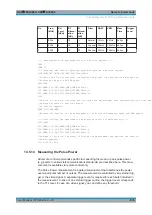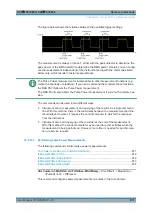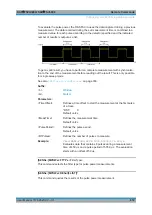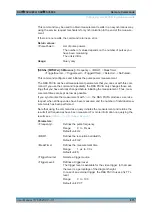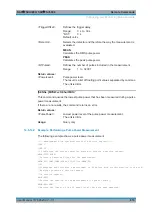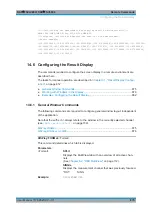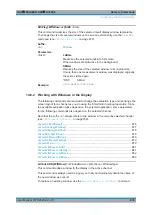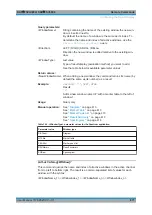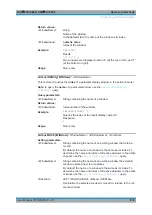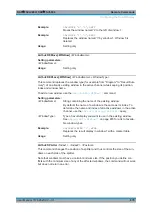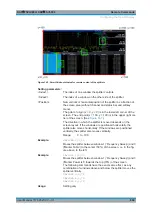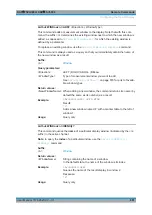
Remote Commands
R&S
®
FSVA3000/ R&S
®
FSV3000
866
User Manual 1178.8520.02 ─ 01
//Queries the measurement results.
//If the results are not accurate, change the position of the
//the temporary markers manually.
//----Changing the position of the temp markers-----
CALC:MARK:X 100MHZ
//Positions the reference marker on 100 MHz.
CALC:DELT2:X 5KHZ
//Positions delta marker 2 and 3 at a distance of 5 kHz to the reference marker.
CALC:DELT3:X 1KHZ
//Corrects the position of delta marker 3 by 1 kHz.
CALC:MARK:FUNC:MDEP:RES?
//Queries the measurement results for the repositioned markers.
14.5.13
List Evaluations
A list evaluation is a multiple power measurement that measures the power at up to
200 frequencies. The measurement itself is a time domain measurement. Note that if
you set a span greater than 0, the R&S
FSV/A aborts the list evaluation.
Noise cancellation in list evaluations
Noise cancellation is also available in zero span and thus also for list evaluations. See
List evaluations allow for a different instrument setup for each frequency you want to
measure. You can define most of the settings with the commands described here. Set-
tings not covered by the commands listed below can be controlled with the common
commands (see
Chapter 14.7, "Setting Basic Measurement Parameters"
on page 885. Note that these commands have to be sent prior to the commands that
control the list evaluation.
In case of a triggered measurement, a separate trigger event is required for each fre-
quency to initiate that measurement. Note that you have to make changes to the trig-
ger level in the time domain in order for it to take effect for the List Evaluation com-
mands.
The list evaluation is incompatible to other measurement functions (e.g. marker func-
tionality or statistics). If you use a command that controls those functions, the
R&S
FSV/A aborts the list evaluation.
The R&S
FSV/A also aborts the list evaluation if you end the remote session.
The commands can be used in two different ways.
●
Instrument setup, measurement and querying of the results in a single command
line. This method causes the least delay between the measurement and the result
Configuring and Performing Measurements

